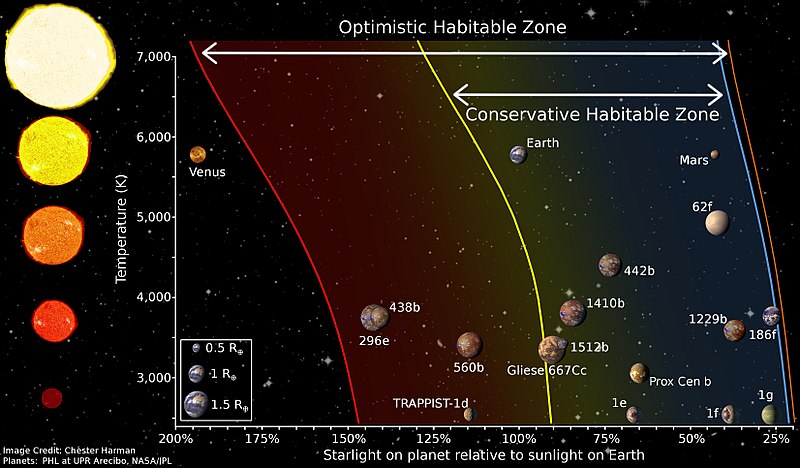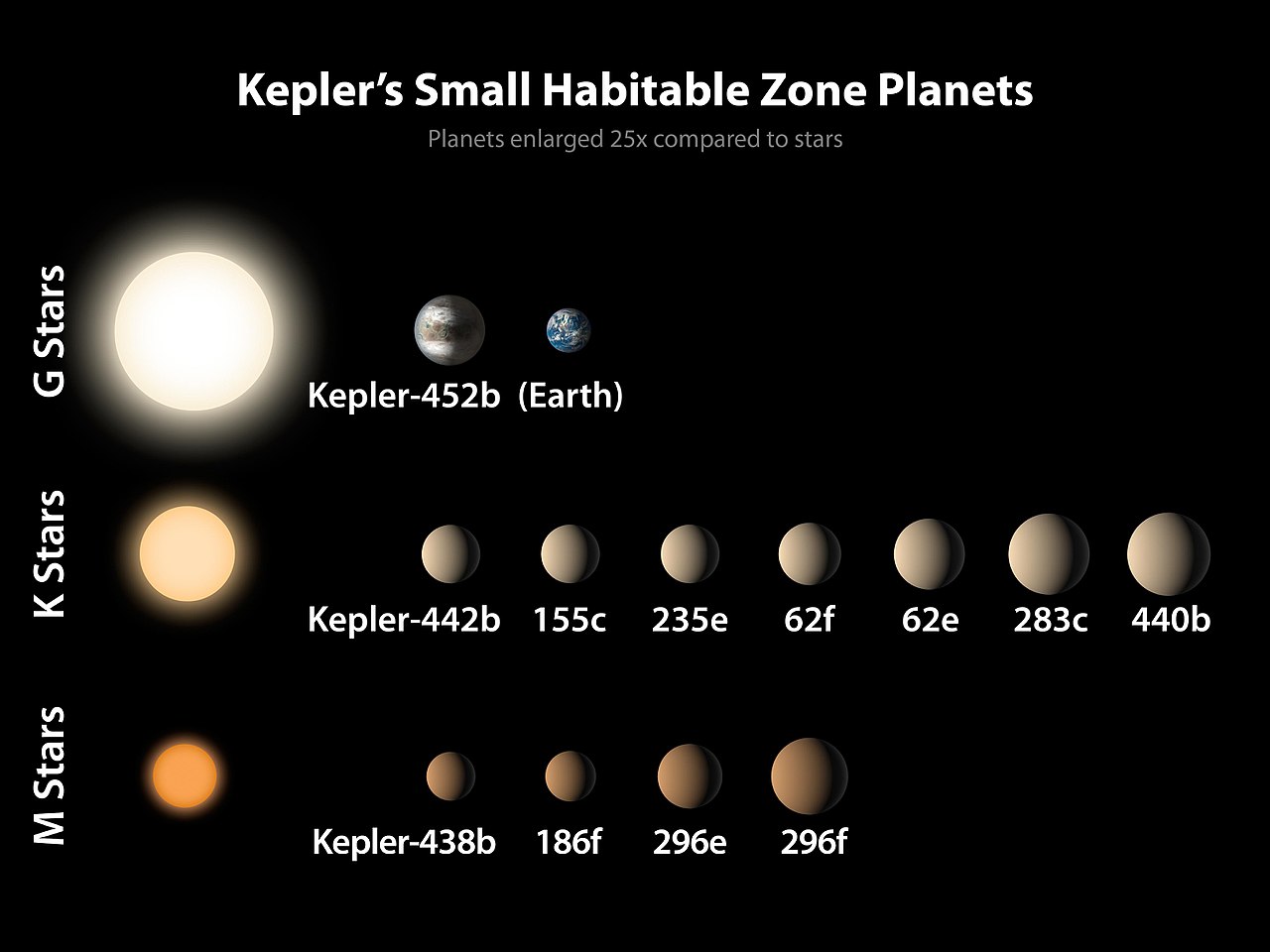14.2: Orbits of Exoplanets
( \newcommand{\kernel}{\mathrm{null}\,}\)
 Comparison of habitable zones for different sized stars.
Comparison of habitable zones for different sized stars.
https:/commons.wikimedia.org/wiki/File:Diagram_of_different_habitable_zone_regions_by_Chester_Harman.jpg;
To date, most of the detected planets have orbits smaller than Jupiter's, closer to Neptune than that of Earth. Planets that orbit at greater distances are harder to detect with the Doppler technique. Kepler has enabled us to find many planets with masses lower than that of Jupiter. Orbits of some extrasolar planets have a greater eccentricity than those in our solar system. As techniques for finding planets with longer periods, it is likely, we find more of those.
About 20% of stars surveyed may have Earth-like planets in their respective habitable zones. While some Earth-analogs have been found, there is a gap in our detection consisting mainly of smaller planets with long (100 days or more) orbital periods As we collect and analyze more data and our techniques for finding long period exoplanets improve, we can expect that this gap will be filled in.
We know have enough confirmed exoplanets to conclude that planetary systems are likely the norm. Most stars are expected to have at least one planet orbiting them. We have, however, found some surprises in these studies. For example, many extrasolar planets have highly elliptical orbits, unlike the nearly circular orbits in our solar system. Planets also show great diversity in size and density, including numerous exoplanets intermediate between Neptune and Earth, even though no such planet exists in our solar system.
 Orbit of Gleise 3470.
Orbit of Gleise 3470.
https:/commons.wikimedia.org/wiki/File:Structure_of_Exoplanet_GJ_3470_b.tif;
The detection of hot Jupiters has required us to revisit some of the assumptions in nebular theory. The earlier nebular model predicts that massive Jupiter-like planets should not form inside the frost line (at << 5 AU of our Sun). Despite this, we have found numerous Jovian-type planets very close to their host stars. While part of this is to due the bias of early techniques, the large number of hot Jupiters requires some explanation. This may be explained by planetary migration, in which planet forms further away from the star and then moves in closer. For example, a young planet's motion can create waves in a planet-forming disk. Models suggest that matter in these waves can tug on a planet, causing its orbit to migrate inward. Also, a close gravitational encounter between two massive planets could eject one planet while flinging the other into a highly elliptical orbit. Multiple close encounters with smaller planetesimals may also cause inward migration. Orbital resonances between large planets with a 2:1 ratio in their orbital periods may also contribute to inward migration.
 https:/commons.wikimedia.org/wiki/File:PIA19827-Kepler-SmallPlanets-HabitableZone-20150723.jpg;
https:/commons.wikimedia.org/wiki/File:PIA19827-Kepler-SmallPlanets-HabitableZone-20150723.jpg;



